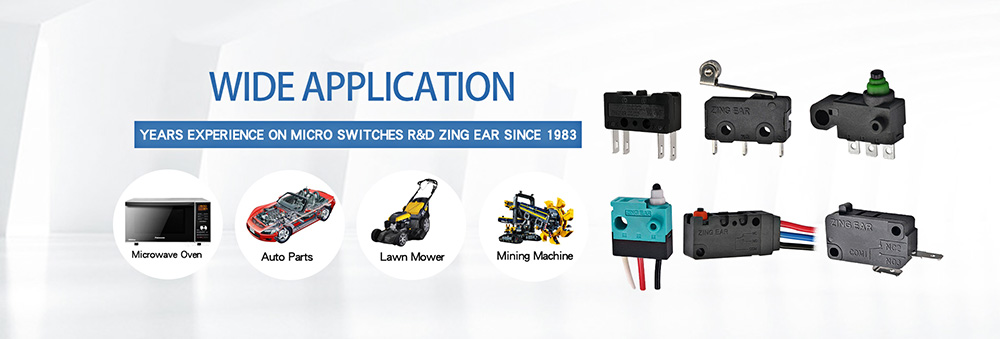Switch is a common electronic component, which can control the on and off of the circuit, so as to realize various functions. According to the structure and working principle of switches, they can be divided into different types, such as light touch switches, micro switches, toggle switches, key switches and so on. In this article, we will focus on the difference between micro switches and ordinary switches, as well as their respective characteristics and scope of application.
What is a micro switch?
A micro switch is a type of switch that can trigger a switch in a small range. It realizes the switching function by applying force in a specific direction through its external operating lever, which causes the opening and closing of an internal contact point. This contact point is also usually made of a metallic material and offers high durability and reliability. The structure of a micro switch is slightly more complex than that of a light-contact switch, and usually consists of components such as a housing, an operating rod, a contact point, and a spring. Among them, the contact is also the core component to realize the switch function, which usually consists of two metal pieces, one of which is the fixed contact and the other is the moving contact.
The most important characteristic of a micro switch is that its triggering force is greater than that of a light-contact switch, and a certain amount of force is usually required to realize the switching function. In addition, micro switches are characterized by reliability and long life. Because of their reliability and long life, microswitches are widely used in industrial fields, such as automobiles, machinery, and electrical appliances.
What is an ordinary switch?
An ordinary switch is a switch that accomplishes the on/off operation of a circuit by manual operation. It opens and closes an internal contact point by applying a small force to its external contact surface. This contact point is usually made of a metallic material and has a high degree of durability and reliability. An ordinary switch usually consists of a housing, a button, a spring, and a contact. Of these, the housing is made of plastic or metal, the pushbutton is removable, and the spring is used to keep the pushbutton in place. The contact is the core component to realize the function of the switch, which usually consists of two metal pieces, one of which is a fixed contact and the other is a moving contact.
The most important feature of ordinary switches is that their triggering force is small, and only a slight pressure is needed to realize the switching function. In addition, ordinary switches are characterized by stability and long life. Due to its special working principle and superior performance, ordinary switch is widely used in many electronic products. For example, digital cameras, cell phones, electronic game consoles, remote controls and so on.
Comparison between micro switch and ordinary switch
From the point of view of principle, structure and characteristics, both microswitches and ordinary switches realize the switching function by applying force externally to realize the opening and closing of the internal contact point. However, the triggering force of micro switches is larger than that of ordinary switches, while ordinary switches are more sensitive than micro switches. In terms of application, microswitches are mainly used in industrial equipment, while ordinary switches are mainly used in consumer electronics. In addition, microswitches are usually more expensive than ordinary switches, but in some applications where more reliable and stable switching functions are required, microswitches are preferred.
To summarize, micro switches and ordinary switches are both common types of electronic switches, which differ in terms of working principle, structure, features and scope of application. When choosing switches, it is necessary to consider their specific applications and requirements in order to select the most suitable switch type. Meanwhile, with the continuous updating and development of electronic products and industrial equipments, the types and technologies of electronic switches are also constantly developing and updating, which provides us with more possibilities to choose.

